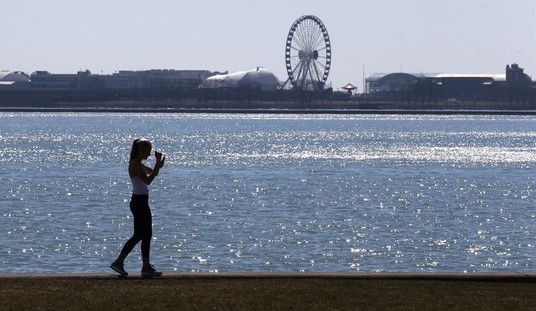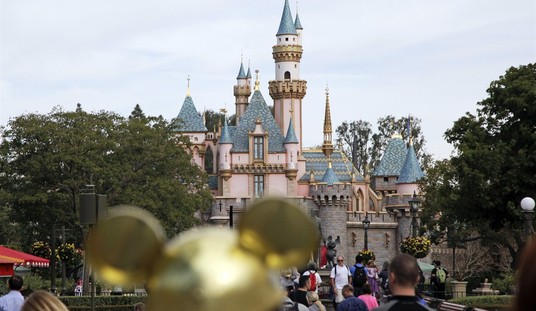Spring Ahead, Fall Back
Time, as we measure it, is arbitrary. The length of the day varies throughout the year, of course, unless you live exactly on the equator. We define a "day" as one rotation of the Earth around its axis, which is sensible; we define a "year" as the Earth making one orbit around the sun, which is also sensible. The 24-hour day is a little more befuddling, but at least we know why we do so; it's because the ancient Egyptians and Babylonians used a base-12/60 mathematical system, thus, 24 hours in a day and 60 minutes in an hour. Were someone to set up a new system today, we may well see a day divided into ten hours and 100 minutes in an hour, which, with our base-10 system, makes a lot more sense.
But the number of sub-units into which we divide a physical event — one rotation or one orbit — is pretty arbitrary. We do it the way we do it because people have been doing it that way for a long time. Reliable clocks didn't really exist until the 14th or 15th centuries, and the concept of time zones didn't even exist until the late 1800s when the railroads determined them to be necessary in keeping schedules. With that, we finally had what we consider today to be our modern method of timekeeping.
The U.S. Government Messes Things Up
Then, in 1918, the United States passed the Standard Time Act, also known as the Calder Act, which created the Daylight Savings Time system currently in use in the United States. (Other countries use similar systems, but let's keep this focused on the U.S. for now.) Daylight Savings is, to put it bluntly, one of the dumbest things our federal government has ever done — and it's up against some pretty stiff competition. This weekend — Saturday night, to be exact — we implement "fall back" as the overweening stupidity that is Daylight Savings Time drops off for the year. Issues & Insight's editorial board has some thoughts.
Americans should instead refuse to play along. Few government mandates combine such utter pointlessness and serious public health harms than the twice-a-year switch on and off Daylight Saving Time. It’s time to end the madness.
First, despite its label, “Daylight Saving Time” does not save daylight. It doesn’t even save energy. Two studies looked at energy use before and after changes in DST laws. Indiana went on daylight saving time statewide for the first time in 2006, and in 2007 when President George W. Bush’s godawful energy bill started DST three weeks earlier.
Both found no energy savings. Energy use in Indiana actually went up when it went on DST. So if switching back and forth each year doesn’t save energy, what does it do?
Of course there were no energy savings! The day remains 24 hours, or 10 daytenths, or whatever long, no matter how we set our clocks. Our timekeeping system in no way alters the amount of time it takes for the Earth to make one rotation about its axis. I'm not sure how being on DST causes more energy use unless perhaps people use more lighting and so forth in the mornings as the clocks are ahead an hour.
But there are, apparently, safety issues as well.
A study in Health Economics found that “springing forward” causes “the suicide rate to rise by 6.25% and the death rate from suicide and substance abuse combined to increase by 6.59% directly after the time change.”
Another study published in Sleep Medicine found a significant increase in traffic fatalities on the Monday after the switch to DST, because people are sleep-deprived by having to get up an hour earlier.
But the study also found that traffic fatalities climbed on the Sunday after everyone “falls back” to standard time. As the researchers noted:
The behavioral adaptation anticipating the longer day on Sunday of the shift from DST in the fall leads to an increased number of accidents suggesting an increase in late night (early Sunday morning) driving when traffic-related fatalities are high possibly related to alcohol consumption and driving while sleepy.
The annual switch also correlates with higher rates of heart attacks and workplace injuries.
Time to End It
Look, there is a thing called a circadian rhythm. We live on a world that completes a rotation in a specific time, which we now define as 24 hours (actually 23 hours, 56 minutes, and 4 seconds measured against neighboring stars.) We also have a corresponding internal clock that is set at, you guessed it, 24 hours. That's what a circadian rhythm is. That's what Daylight Savings Time, spring ahead or fall back, messes with. Just listen to any group of people on the Monday morning after either event and, for sure and for certain, you'll hear people complaining of sleepiness or discombobulation resulting from the time change. We mess with our circadians at our peril, and as you can see above, Issues & Insights has brought the receipts establishing that this is so.
Trust me, speaking as an Alaskan, our day and night lengths are, let us say, unusual enough as it is without messing around with clock changes. Long, long summer days (while greatly enjoyable) and long, long winter nights are enough fun without outside interference.
Messing with the clock twice a year just complicates things. It’s stupid. It’s arbitrary. The reasons for doing it in the first place were BS and didn’t work. It’s time for the whole Daylight Savings fiasco to end. I don’t care which time they pick. I'd prefer Standard time, but whatever, pick one and stick to it all year. Enough is enough. It's past time the fiasco that is Daylight Savings Time comes to an end.














